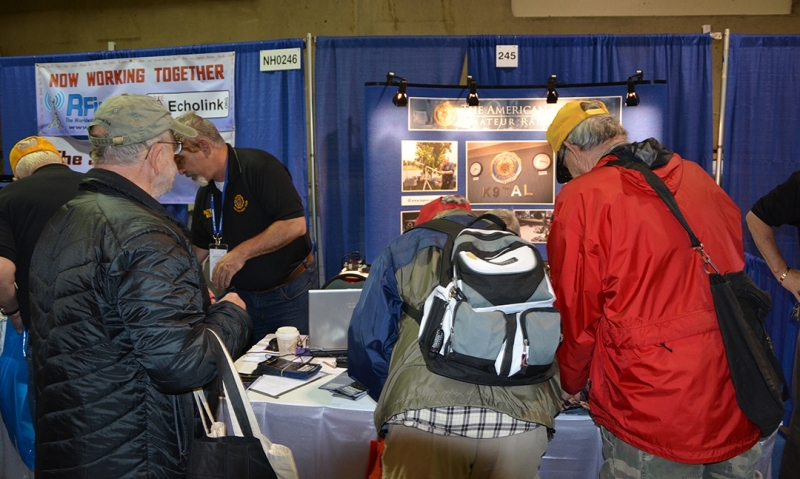
Civil defense and Raspberry Pi
Each May since 2014, officers of The American Legion Amateur Radio Club (TALARC) have traveled to Ohio’s Hamvention – America’s largest amateur radio convention, with an annual attendance between 20,000 and 25,000 – in order to both take in what’s new and exciting in the ham world, and reach out to operators via their own information booth to join TALARC and even the American Legion Family.
TALARC Vice President Bill Sloan considers the 2018 convention “very successful in getting our name out … we signed up 25 new TALARC members and a handful of new Legion and SAL members as well.” Club members attending on their own took shifts staffing the booth to pass out TALARC pamphlets, “Why You Should Belong” membership pamphlets and copies of The American Legion Magazine.
In this fifth year of appearance, the club’s efforts to tap in to the deep connection between veterans and ham radio continued to bear fruit – Sloan reports seeing several attendees wearing American Legion Amateur Radio shirts from Emblem Sales. Appreciation for the national club, and its national nets, was expressed by booth visitors, many of whom joined the Legion through TALARC at previous conventions and do not have clubs near their homes.
As with any convention/trade show, the newest technology and products were on display. The trend in 2018 seems to be portability, with handheld digital radios, “go boxes” that contain station equipment in a briefcase, and microcomputers that can incorporate multiple connections to do lots of things in very small spaces – a popular and inexpensive example is the Raspberry Pi.
Sloan attended forums conducted by the Department of Homeland Security and FEMA – which are placing a new focus on emergency preparedness at the local level – and got up to date on the latter’s Incident Command System (ICS) system. FEMA’s website describes ICS as “a management system designed to enable effective and efficient domestic incident management by integrating a combination of facilities, equipment, personnel, procedures and communications operating within a common organizational structure.” Its main purpose is to enable those involved in response to an incident to focus on necessary details/problems while not losing sight of overall operations. Sloan characterizes the system as “a huge opportunity for our posts whether they form radio clubs or not, particularly in the Gulf Coast states and within Tornado Alley from Oklahoma to Ohio.
“If it sounds like a return to Civil Defense days, well, it is. Only with federal resources that many posts will be able to take advantage of. We have our thousands of posts across the United States. That is attractive to FEMA.”
